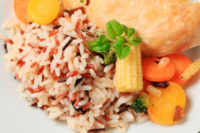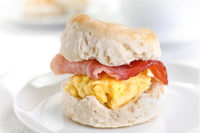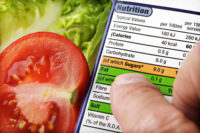Formulation Strategies: Bringing home restaurant quality






Innova Market Insights recorded a marginal fall in new product activity in its ready meals category in 2011, although this takes a very wide definition of the market, encompassing not only ready meals, main dishes/meal centres, meal kits and pizza, but also prepared and plain pasta and noodles, potato products, prepared salads, rice, sandwiches and other meal components. Pasta and noodles (plain and prepared) accounted for a leading 40% of launches, ahead of ready meals, with just over 13%, and main dishes, with just over 10%.
Key growth areas in terms of launch activity in 2011 were ready meals and sandwiches, with numbers up about 8% each. In terms of geographical distribution, North America and Europe accounted for just under two-thirds of introductions recorded over the year, reflecting the relatively well-developed processed-food market in the region, while the smaller but dynamic Asian market accounted for nearly one-fifth, giving the three regions a dominant 85% of the total.
The U.S., which accounted for about 12% of global ready meals launches in 2011, has not only the largest ready meals market in the world in value terms — reflecting both population size and the highly developed state of the processed and convenience foods market — but also one of the highest per capita consumption figures at over 10kg. The convenience meals market in the U.S. is valued at about $7 billion, with frozen products accounting for over $5 billion of that and shelf-stable/meal kits $2.1 billion.
Unlike the market in European countries such as the U.K. and France, the U.S. market is dominated by frozen lines, with the chilled market very underdeveloped. There are some signs that levels of interest in chilled meals are now rising in the U.S., and as it is in the U.K., this move is being led by retailers’ own private-label brands, with introductions such as Kroger’s Healthy Meals Made Simple range, focusing on convenience, quality and flavor advantages over frozen products.
Also unlike much of Europe, the share of private-label brands is relatively small in the U.S., at about 5% in frozen meals and 10% in shelf-stable/meal kits. Likewise in the $4 billion U.S. retail frozen pizza market, private-label brands have a share of less than 10%. This reflects the strength of the leading brands in these markets, with Nestlé, ConAgra and Heinz dominating in frozen meals, and Nestlé (having bought Kraft’s U.S. pizza business in 2010) and Schwan’s in frozen pizza.
Key growth areas in frozen meals in 2011 were bagged dinners for two and skillet meals, while in pizza, unconventional and exotic toppings have been driving product activity.
Interesting developments included the launch of Evol Bowls, a range of microwaveable frozen organic bowl meals in 100% compostable bowls made from sugar cane; fish specialist StarKist’s launch of its SeaSations microwaveable frozen fish fillets and meals range; and MaMa Rosa’s Myrna Rae Tailgate Party Pizza, a chilled product created by Myrna Rae and shaped like American football helmets, with specially designed packaging.
Although many of the products in the global prepared meals sector are naturally vegetable-based, particularly rice, pasta and salads, a significant number are also specifically positioned on a vegetarian platform, equivalent to nearly 11% of global launches in 2011. Many ranges include vegetarian products or have vegetarian sub-ranges, but there has also been some evidence of rising levels of interest in specialist vegetarian ranges, especially in Western Europe.
The number of meal kit launches recorded by Innova Market Insights in 2011 made up less than 2% of the total number of global ready meal introductions, but activity has increased in recent years, reflecting interest in products offering a balance between convenience and in-home preparation, where fresh ingredients and simple instructions can be combined in the home to give a high-quality, homemade-style meal.
The original, primarily ambient, products are increasingly giving way to fresh and chilled products. The Cookista brand, launched in France in late 2011, provided all the fresh ingredients required to create a single-serve meal. Sold in brown bags, the kits included ready-washed and chopped vegetables, sous-vide packaged meat or poultry, a sauce and some seasoning to create a meal in 15 minutes.
In the U.K., the Scratch chilled meals brand, first launched at East London’s Whitecross Street Market in 2009, went national in 2011 with a launch via the retailer Sainsbury. The meals are designed to be cooked at home in 15 minutes and include all the ingredients necessary.
Earlier in the year, the Lake House Table range of chilled meal kits was replaced with the Kitchen Suppers range, which interestingly was not organic, as the original range was, although it does use free-range and outdoor-reared meat. A range of chilled seafood meal kits was also launched in the U.K. by Lyons, featuring fresh seafood, vegetables and a sauce, in four varieties — Malaysian King Prawn Laksa, Kerala Seafood Curry, Sweet Thai Chilli Prawns and Catalan Fish Stew.
The chilled prepared foods market in France, like that in the U.K., is relatively well-developed, with a value of over €3.2 billion a year. Ready meals account for the largest share of this, at over €600 million, and one of the newest and fastest growing sub-sectors of the market in recent years has been that of individual boxed meals.
That sub-sector, with packaging reminiscent of ethnic takeaway foods, saw sales rise over 90% to reach €90 million in 2011, while sales of individual tray and bag meals fell 1%. Sodebo leads the boxed meals market with about 40%, well ahead of Lustucru and Fleury Michon. Weight Watchers and Marie are also major players. The share of private-label brands is relatively low at 13%, compared with nearly 35% in the chilled meals market as a whole.
Meanwhile, the boxed chilled meals concept has spread to other countries, including Spain — with 2011 launches including Palacios’ Mr Box collection of microwaveable meals with included fork for ease of consumption — and the U.K., where French market leader Sodebo introduced its PastaBox range of microwaveable pasta meals.
Meanwhile, in France, the boxed meal concept spread from the chilled foods to the frozen foods market, with Heinz’s mid-2011 launch of the first frozen meals in a box format, featuring Chicken & Mushroom Risotto and Salmon & Parmesan Risotto.
The chilled sector has also continued to expand, with boxed fish meals launched by Guyader, rice meals under the Lunch Box Go To brand from Lustucru and an eight-strong range inspired by flavors of the world under the Box Trotter brand from Sodebo.
In summary, product activity in ready meals highlighted by Innova Market Insights includes ongoing interest in healthy options, more authentic-style ethnic recipes, more emphasis on natural, organic and locally-sourced ingredients, and more interest in restaurant-style products for in-home dining or home entertaining as an alternative to eating out.
Thus, despite the continuing economic difficulties in some countries, consumers are continuing to buy ready meals, in individual and family-size packs, and even trading up to premium lines, both chilled and frozen, in order to benefit from their convenience while potentially still saving money by using them on some occasions rather than home-delivery, take-out or eat-in restaurant options.
Looking for a reprint of this article?
From high-res PDFs to custom plaques, order your copy today!











